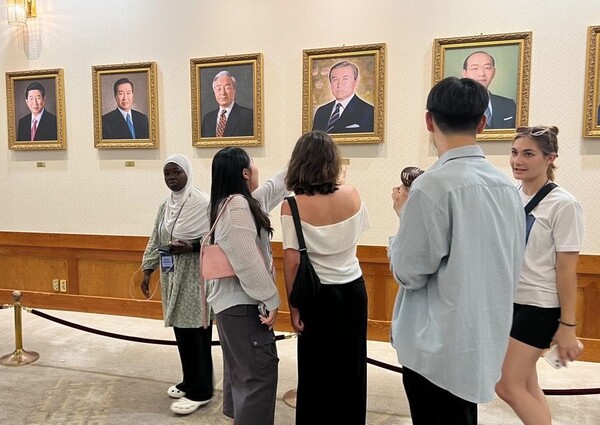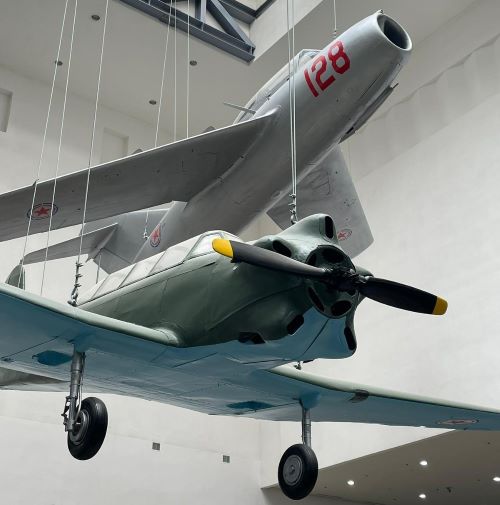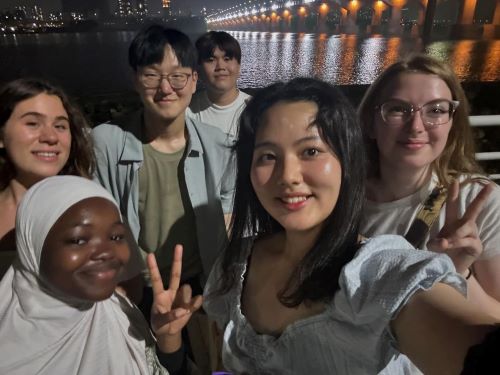
With the aim of expanding beyond academic classes, the Chonnam National University International Summer Session (CNUISS) offers its participants just that. Students, staff, and professors all gain a deeper understanding of Korean culture through cultural excursions. During a month-long program, full-day experiences take place on Wednesdays and weekends. One of the standout experiences of the program was the two-day trip to Seoul, where participants engaged themselves in a range of educational activities.
Educationally Well-Structured Excursion
The itinerary began with a visit to the Blue House, where its stunning architecture and gardens were meant for peaceful strolls and conversation. At Gyeongbokgung Palace, guests dressed in traditional hanboks and groups enjoyed melon ice cream at a nearby café to escape the heat. Moving on to the final stop, a few teams explored the Lotte World Tower in Jamsil, indulging in window shopping, dinner, and sweet treats before a leisurely walk along the Hangang River. Ending the night in the hotel, new friends bonded over games while sharing snacks into the late hours.
Day two included a visit to the National Museum of Korea, where the participants aimlessly wandered among artifacts such as the Silla Crown and celadon pieces. The museum's exhibitions deepened cultural understanding and resonated through personal experiences. After a transition to Yongsan, groups gathered for lunch in IPark Mall, where humorous discussions further strengthened friendship. Lastly, the trip concluded with a visit to the War Memorial of Korea, where it offered reflections on history and sacrifice, fostering appreciation for Korean society. The return to Gwangju was then designated for rest, allowing participants to revisit the weekend.

Finding Balance Between Education and Entertainment
The CNUISS was undoubtedly well-intentioned, aiming to expand knowledge beyond academic classes. However, certain aspects of the program’s execution could be improved for the future, ensuring a smoother and more comfortable experience. In particular, the two-day trip to Seoul could benefit from adjustments in balancing activities and enhancing tour planning based on collective feedback from the participants.
Although the value of educational tours was clear, as the visit focused on historical sites and museums, a balance with more tourist-oriented activities would better suit a group of 100 twenty-year-olds. Jenna Overmeer (English, University of Redlands, USA) noted, “I think they were good places to visit and important to Korea’s history. A lot of people weren’t super into the museums or sites that we went to. Time would have been better used had we mixed it up and done some more sightseeing or touristy things like visiting Namsan Mountain, going as a group to Myeongdong or Jamsil, or doing something along the Han River rather than just visiting museums.” Adjusting the itinerary for a more balanced visit is within the program’s role to plan for the participants.

Enhancing Flexibility for Participant Engagement and Information Provision
Beyond the program’s decision for the trip itinerary, free time should be decided individually for a personalized experience. Flexibility outside the scheduled program would allow participants to explore Seoul based on personal interest after the planned activities. This approach would enable choices in dining, attractions, or nightlife options as a means of making the most of Seoul. To enhance the experience during the schedule, more flexibility could be provided for the planned ‘free tour’ in Seoul. Although organizing the tour was the participant’s responsibility, teams often struggled to plan effectively, resulting in poorly used time. To avoid issues of partial consensus within teams, participants would individually choose from the three locations to explore, and thus the engagement would improve overall satisfaction.
At Gyeongbokgung Palace, a map and more information about places to explore within the grounds would have been helpful. Kateřina Dvořáková (Psychology, University of South Bohemia in České Budějovice, Czech Republic) reflected, “I think it would have been helpful to receive more information about the history or significance of the sights either before or during our visits. I don’t necessarily mean guided tours, but a brief description beforehand would have been appreciated to give me a sense of where I was going. I find Korean history fascinating, and I would love to learn more from locals during my stay. While I can look up information myself, having it provided would be very convenient.” Most participants were unfamiliar with the palace and ended up sitting around the cafe for over an hour instead of exploring.
Adjusting Excursion Time for Enjoyment
Similarly, the schedule’s intention did not align well with the actual experience, thus a change in time allocation would improve the visit. Only an hour was allotted for eating, in shopping centers, where much of the time was spent deciding and waiting in large groups. Looking at the Blue House, participants were given an hour and a half to explore a building and garden, which could have been done in 30 minutes. By reallocating time spent on educational sites to allow longer meals and leisure time, participants would have a more relaxed experience.
While the CNUISS offers valuable educational experiences, certain aspects of its execution could be improved. Balancing educational tours with tourist activities, implementing a flexible system, and improving planning and communication would enhance the overall experience. By addressing the participants feedback, the program has the potential to be even better in future engagement.
* The author is a senior student majoring in Science in Business at the University of Redlands in the United States and takes part in the Chonnam National University Summer Session 2024 from July 1 to July 28.

